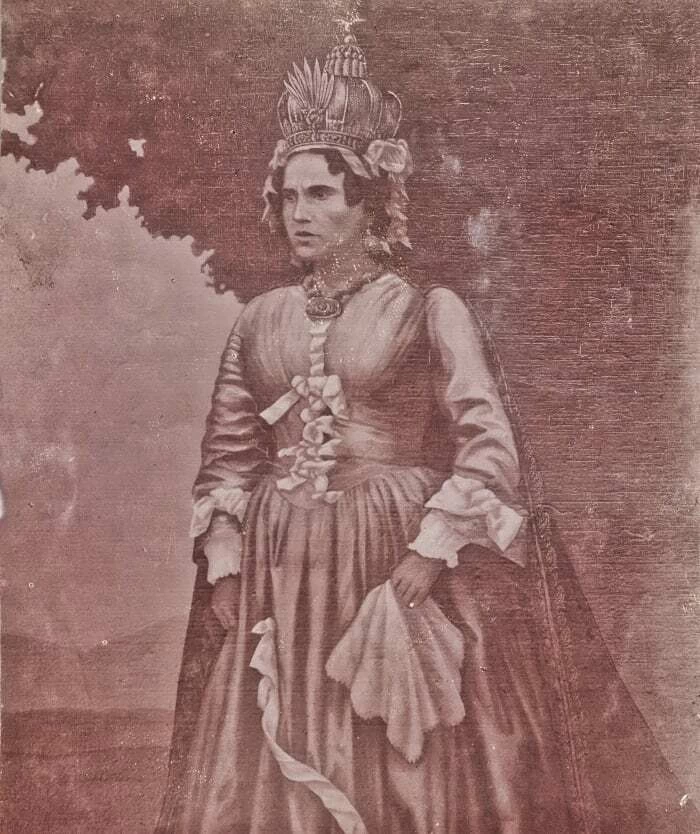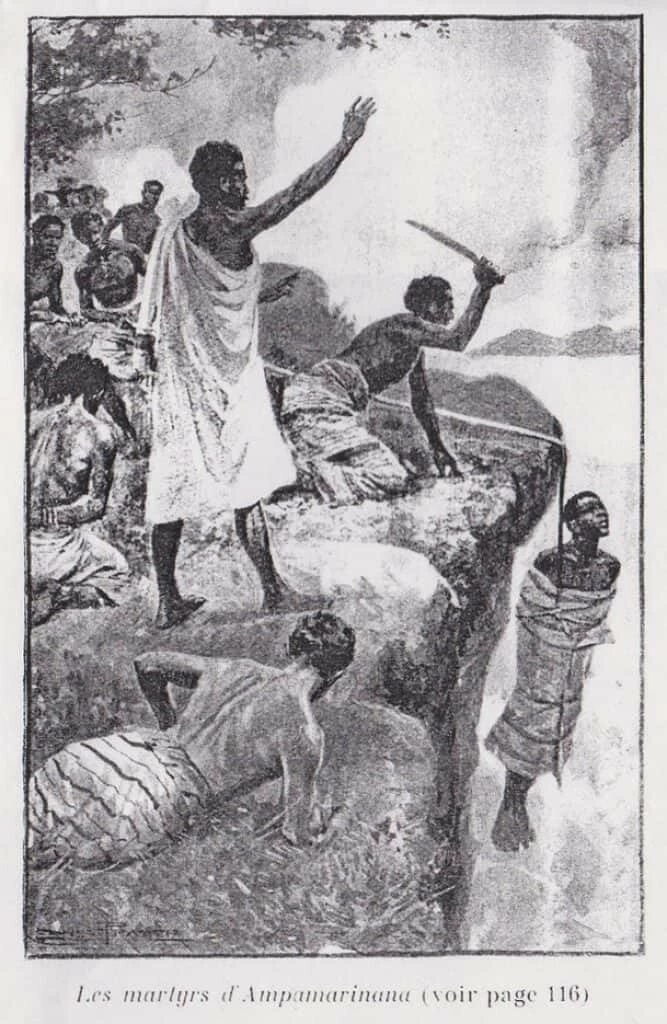History is full of male and female world leaders who became famous because of their tyrannical and inhumane quests to dominate. Some of them even killed multitudes of people in their unquenchable thirst for absolute power. However, few have ever come close to the degree of brutality and sadism that one particular female ruler displayed. Her name was Queen Ranavalona I, and she ruthlessly ruled the island nation of Madagascar off the South African Coast for more than three decades from 1828-1861. Although she somehow escaped the notoriety other despotic rulers gained, she presents a convincing case for being the most murderous woman in history, having been responsible for millions of deaths.

Ramavo Becomes Ranavalona I
Born in 1778 to relatively common parents, Ranavalona I, also known as Ramavo and Ranavalo-Manjaka I, embarked on a life of infamy when her father overheard an assassination plot against the nation’s king. Her father promptly made the king aware of the plan, who subsequently foiled the plot. In return, the appreciative and grateful king rewarded Ramavo’s family by betrothing her to his crown prince son and heir to his throne, Radama. In 1810, Radama ascended to the throne, accompanied by Ramavo. Unfortunately, the marriage was an unhappy one that failed to produce an heir.
Adhering to the standard customs of the position, King Radama proceeded to methodically ‘eliminate’ his opponents and potential dissenters. To Ramavo’s great distress, several of the ‘eliminated’ included members of her family. This further widened their already troubled marriage and perhaps provided a significant impetus for Ramavo’s future actions. Radama died in 1828, leaving no heir. By law, the next in line of succession was Rakotobe, the well-educated son of Radama’s oldest sister.
You May Also Like: Madame LaLaurie: Sadistic Slave Owner of the French Quarter
Even though she’d managed to stay out of public view for the last few years of Radama’s reign, Ramavo had been busy plotting. She wanted the throne for herself and, aided by several influential and wealthy supporters, she launched a coup d’etat. It was a plan that Ramavo meticulously crafted, and it met with little or no resistance. Subsequently, Ramavo took on the name Ranavalona I and became Queen.
Queen Ranavalona I – Brutal Beginnings
The new queen was strong and ruthless from the very beginning. At her coronation she made her intentions clear:
[blockquote align=”none” author=”Queen Ranavalona I”]Never say, ‘she is only a feeble and ignorant woman, how can she rule such a vast empire?’ I will rule here, to the good fortune of my people and the glory of my name! I will worship no gods but those of my ancestors. The ocean shall be the boundary of my realm, and I will not cede the thickness of one hair of my realm![/blockquote]
One of her earliest acts involved identifying and killing potential threats (both legitimate and imagined) to her throne. The purge began with Ranavalona I systematically capturing and executing members of the late King Radama’s family. Essentially, she was providing a measure of revenge for what her former husband had done to her own family two decades before.
Away With the Christians
Early on in the reign of Ranavalona, the cold-hearted Queen made it perfectly clear that her country was self-sufficient. She had every intention of maintaining that self-sufficiency. Additionally, she would never allow “outsiders” to subvert the ancient system of culture and laws. This proclamation did not bode well for the increasing numbers of Christian missionaries that had been visiting the island for several decades. Ranavalona I warned against outsiders’ influence on her subjects.
[blockquote align=”none” author=”Queen Ranavalona I”]They [Christians] have denied me, therefore I deny them as well. They have rejected me. I reject them.[/blockquote]
Perhaps, she did not fully trust that her power was adequate enough to ensure that her subjects would obey. Thus, she officially banned Christianity from the island in 1835. Eventually, Ranavalona’s paranoia was extended to ALL foreign intervention, most specifically the British and the French.

Ranavalona I: The Female Caligula
Ranavalona I’s three-decade reign of terror was not focused exclusively on foreign interlopers. Her own people also bore the brunt of her ruthlessness. Her subjects often experienced her wrath for the most trivial of offenses. Imaginative in her methods of brutality, Ranavalona I routinely subjected offenders with:
• Hanging. The ‘guilty’ would face hanging for days over steep cliffs, their relatives forced to watch as the rope became frayed until it unraveled, sending the victim to a plunging death.
• Boiling, burning and burying alive. Untold thousands of suspected criminals faced these medieval methods, witnessed by friends and relatives as a warning from Ranavalona.
• Beheadings. In one well-documented instance, Queen Ranavalona I ordered the decapitated heads of captured French soldiers to be impaled on stakes along the beaches of the island to serve as yet another warning to the French who might be planning an invasion.
• Poisoning. Queen Ranavalona randomly conducted loyalty tests by administering poison to subjects in question. Not surprisingly, few ‘test subjects’ survived.
• Brutal forced labor. Often on a whim, the Queen would unexpectedly order unrealistic construction projects, using thousands of unlucky natives or captured prisoners.
During Queen Ranavalona I’s 33-year reign, experts have conservatively estimated that between 50-75% of Madagascar’s population met untimely deaths due to war, disease or the Queen’s barbaric and ruthless system of justice. With at least 2.5 million deaths attributed to Ranavalona I, she has earned the title of the “World’s Most Murderous Woman.”
Following her death in 1861, Madagascar embarked on a nine-month-long period of mourning.
References:
http://www.allday.com/the-female-caligula-was-one-of-historys-most-insane-and-cruel-queens-2180847732.html, retrieved 1 June 2017.
African Heritage